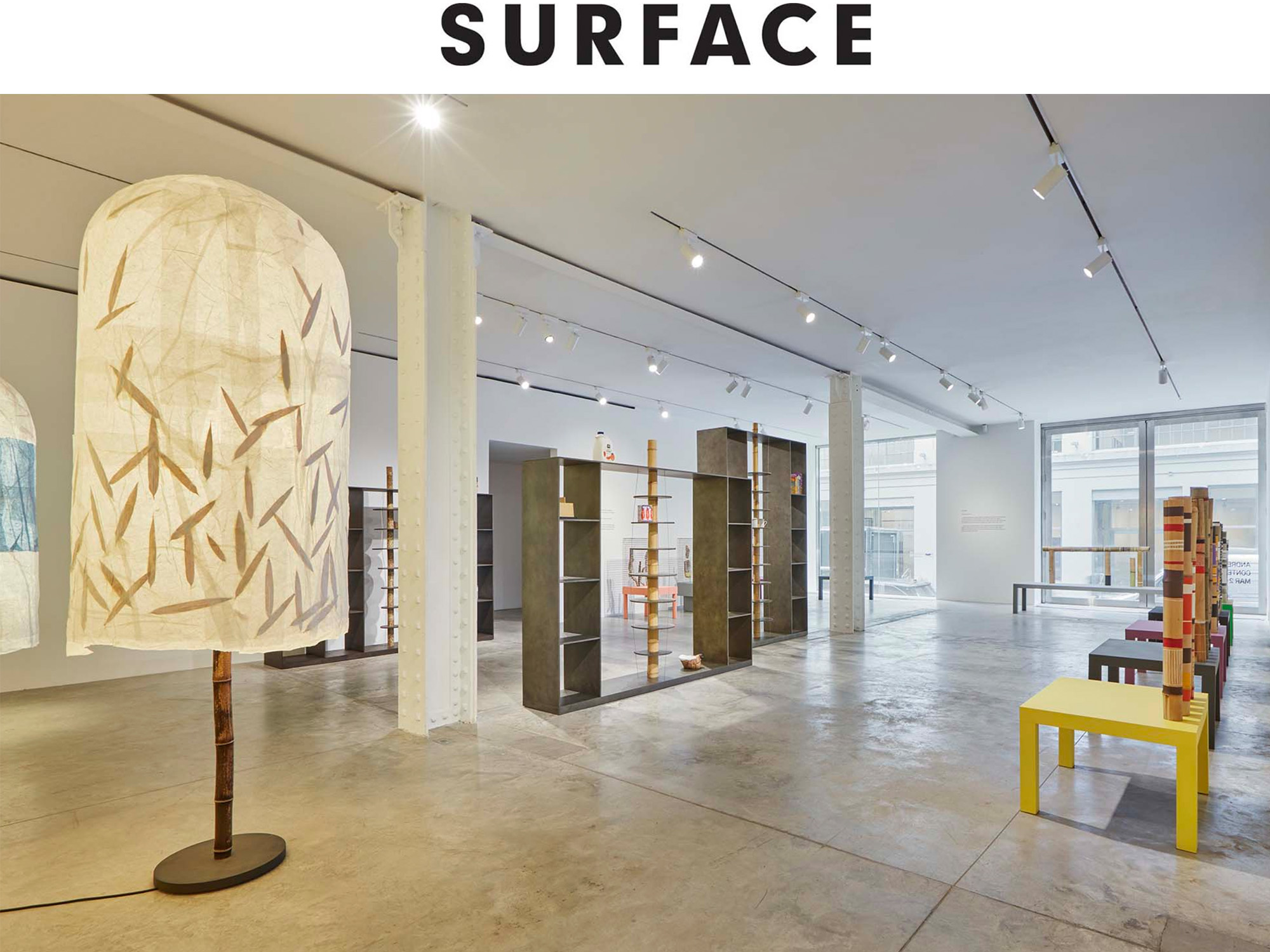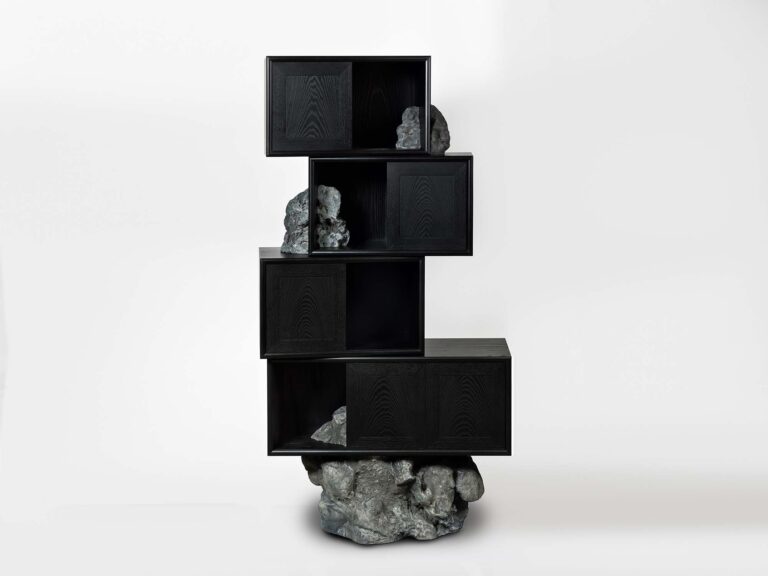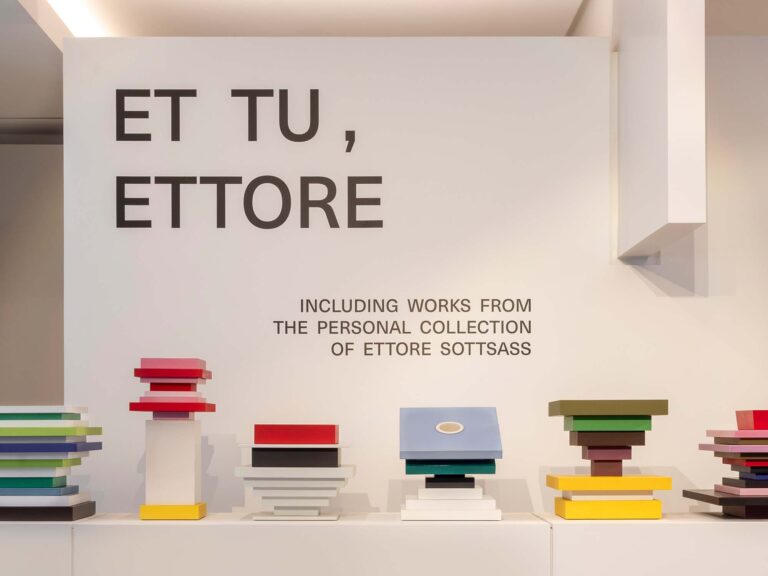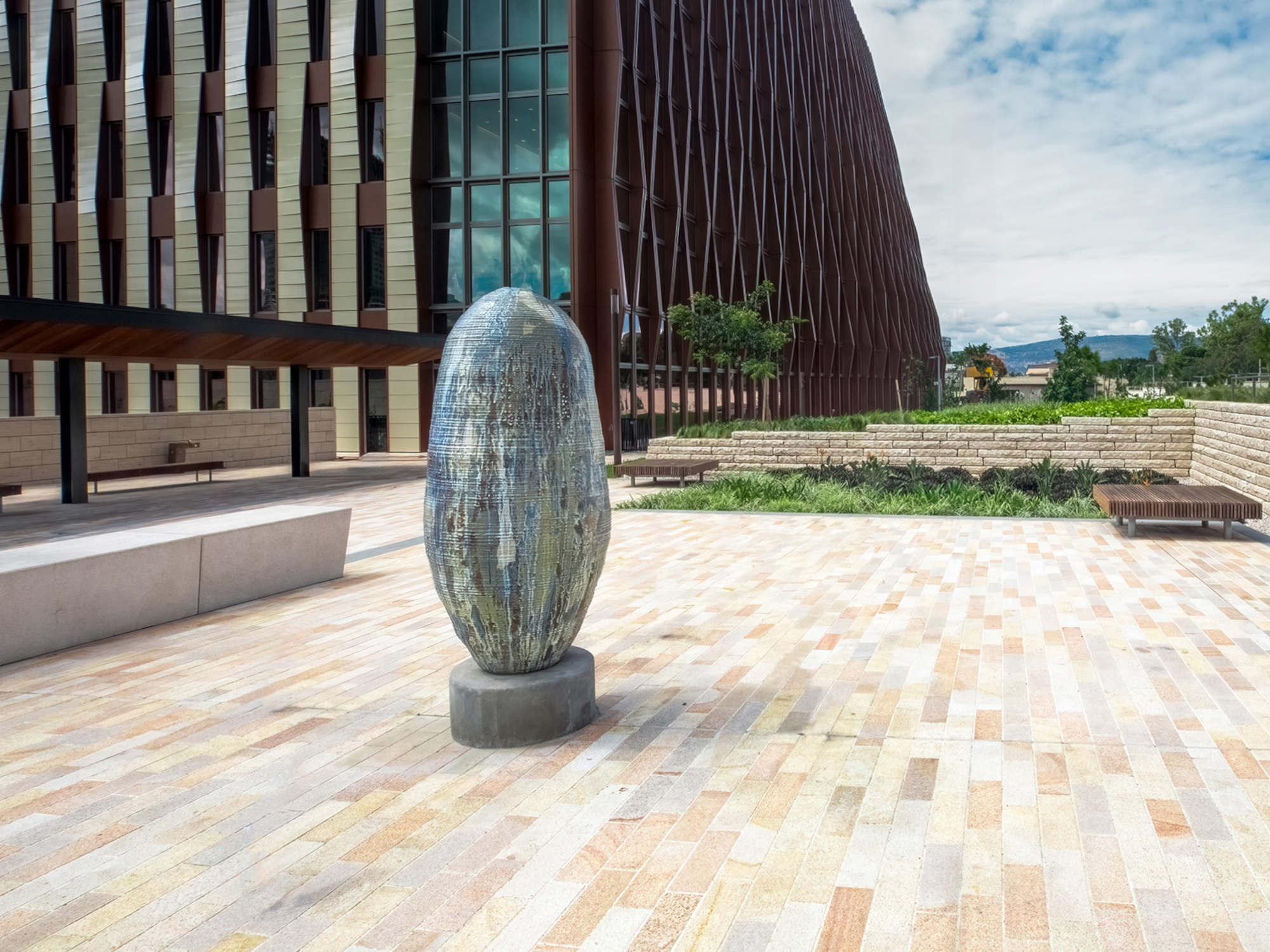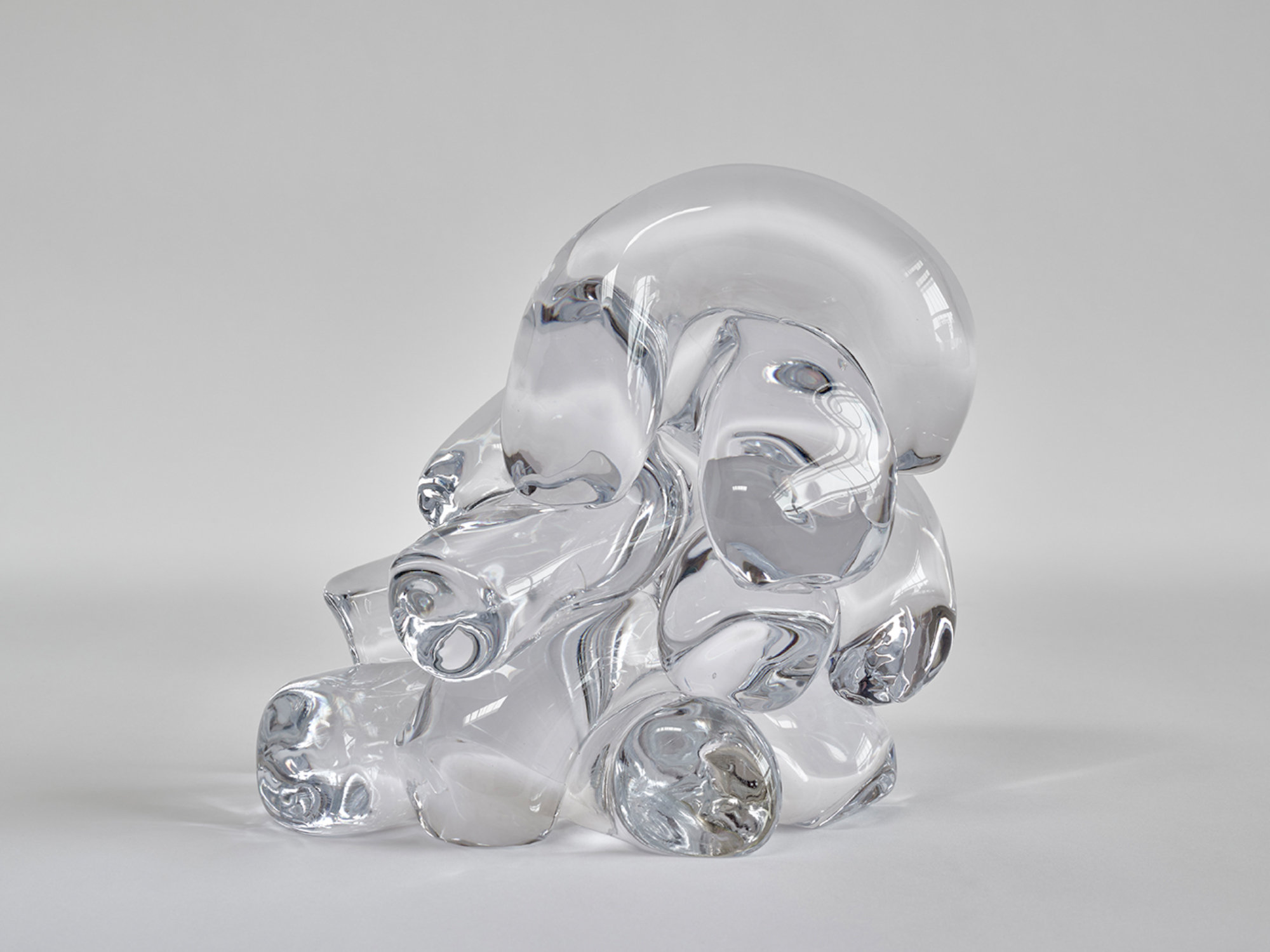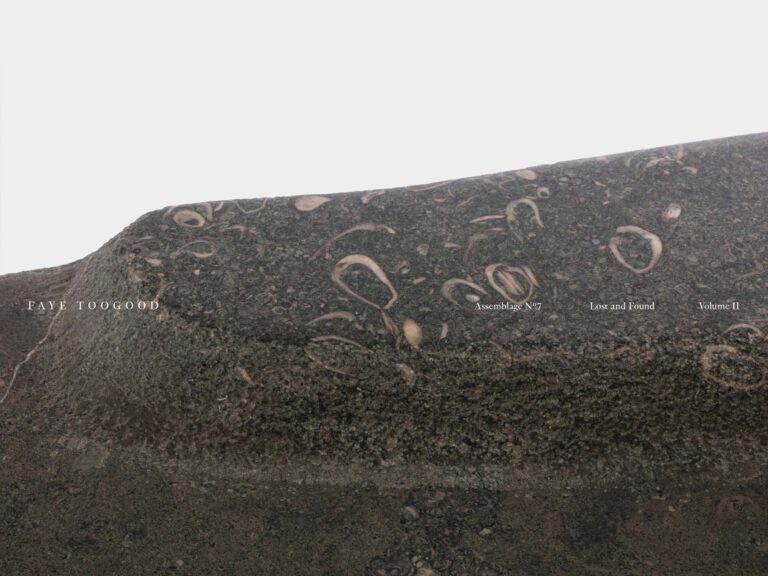What’s Happening: An exhibition of inventive furniture by the Italian maestro breaks the barriers of biophilia.
The Download: In the front corner of Friedman Benda, a grove of little trees gathers. Their canopies of washi paper suspend maple and bamboo leaves mid-flutter; their trunks are also lengths of elegant bamboo, secured to rings of patinated aluminum or marble or Belgian Bluestone. They float, summoning childhood memories of pressing foliage between wax paper. Their glow softens in the gallery’s natural light, conjuring connections not only to Noguchi’s eternal paper lights but also our affinity for biophilia that floated like puffballs from avant-garde galleries into health care, user experience, and product design.
The floor lamps form part of “Contemporary DNA,” a show of new work from the architect, theorist, and designer Andrea Branzi. Now 85, the legendary Italian had a hand in most of the past century’s seminal design movements. In 1966, he co-founded Archizoom Associati, which launched Italian Radical Design. A decade later, he, Ettore Sottsass, and Alessandro Mendini opened Studio Alchimia, pushing the former’s pop sensibility into a highly referential and irreverent postmodernism.
By the mid 1980s, Branzi abandoned all that overthought flash and bent his interests towards the natural world. The result was the epochal “Animali Domestici” collection, furnishings made in concert with his wife, Nicoletta, that united found branches of raw birch and simple planks of varnished MDF in forms that seemed not so much retro-futuristic as timely-yet-timeless meditations on humanity’s need to make a mark.
Branzi called that style “neo-primitive,” and while that locution might strike 21st-century sensibilities as perhaps tinged with a bit of colonial condescension, his recent pieces prove the idea remains fruitful. To the side of the trees, a row of seating lines up; these Germinal chairs and benches use simple MDF frames as grounds from which sprout hand-painted bamboo stalks. The backs are canvases for Branzi’s brush, and each seating a riff on flags, traditional blanket making, semiotics—so much of his history is here, in the pop repetition of the bases and the poetics of his decorations and the PoMo stacking of them onto each other. You’d swear you’d seen them before—or anything quite like them.
Near them rise Branzi’s Buildings, a series of steel storage units with central bamboo columns, their industrial solemnity enlivened by everyday objects—a jug of orange juice, a pack of bottled water—that he asked gallery staff to collect from local shops.
“Contemporary DNA” reaches its full potential far from those trees by the windows, where the gallery has installed his Roots seating. For these, Branzi went foraging for the titular pieces of wood, those elegant forms only nature can create. He painted them with simple bands of primary colors and suspended them in undulating metal cages. It’s almost impossible not to see them as cages, but look closer. What feels like nature constrained becomes imagination unfettered, the cosmos and artistic imagination together in flow. These aren’t gravestones or anthropological vitrines. They’re the building blocks of world-building, not nostalgic but neo.
In Their Own Words: “It’s our view that Branzi was pivotal in the formation of contemporary design’s DNA,” gallery partner Marc Benda tells Surface. “He inserted several of the proteins that built its helix, and he’s still adding information that wasn’t there before.”
Surface Says: Branzi’s influence may seem like it’s everywhere, but his intellect and intuition remain unmatched.
